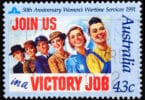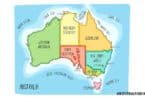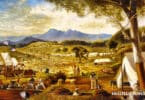Australia has a proud military history, with many of its citizens having served in conflicts ranging from the colonial period to more recent engagements in the 20th and 21st centuries. Tracing an ancestor’s military service can provide a wealth of information, not just about the individual’s role in conflicts but also about the broader historical events that shaped their lives.
Military records offer genealogists detailed accounts of their ancestors’ experiences, including enlistment, deployment, battles fought, injuries, and even correspondence with family members. These records often offer a more personal view of history, connecting your family’s past to Australia’s military heritage.
A Brief Overview of Australia’s Military History
Australia’s military history began long before it became a federation in 1901. Early colonial conflicts, such as the New Zealand Wars (1845–1872), involved Australians, and by the time of the Second Boer War (1899–1902), Australia was actively sending troops overseas. After federation, Australia quickly found itself participating in major global conflicts, beginning with World War I.
• World War I (1914–1918): The First World War marked a pivotal moment in Australia’s history. Over 400,000 Australians enlisted to fight, and more than 60,000 lost their lives. The Gallipoli campaign became a defining moment for the Australian national identity, symbolizing courage and sacrifice.
• World War II (1939–1945): Australia played a significant role in the Pacific theater during World War II. Its forces were involved in critical battles in the Pacific, North Africa, and Europe. Australian cities, such as Darwin, were directly attacked, bringing the war closer to home.
• Korean War (1950–1953): Australia was one of the first countries to commit troops to the Korean War, and it continued to play a significant role in the United Nations forces there.
• Vietnam War (1962–1975): Australia’s involvement in the Vietnam War was highly controversial, with more than 60,000 Australian servicemen and women participating, many of whom were conscripted.
• Recent Conflicts: Australian forces have also been involved in more recent conflicts, including in Afghanistan and Iraq, as well as peacekeeping missions in East Timor and the Solomon Islands.
Why Military Records Are Valuable for Genealogists
Military records are rich in detail and can provide insights into both personal and historical aspects of an ancestor’s life. These records can include:
• Enlistment Papers: These documents typically include an individual’s name, age, birthplace, occupation, and next of kin. They also record the date and location of enlistment, which can help genealogists confirm when and where an ancestor signed up for military service.
• Service Records: These provide a detailed account of an individual’s military career, including their rank, unit, and any battles or campaigns they participated in. Service records also include information about any injuries sustained in combat, awards or commendations received, and, in some cases, letters or personal effects.
• Pension Records: After conflicts, many veterans applied for pensions, and these records often contain valuable information about an individual’s post-war life, including their medical condition and financial situation.
• Medals and Honors: Many Australian soldiers were awarded medals for their bravery or service, and the records associated with these honors can provide insights into an ancestor’s role in key battles or campaigns.
• War Diaries and Letters: These personal accounts, written by soldiers during their service, offer an intimate look into the daily life of a soldier. They can reveal not only details about the war but also the emotional and personal struggles that your ancestors experienced.
Key Historical Military Records
Several types of records are essential for researching military ancestors in Australia. Here’s a look at the most valuable sources:
• World War I Service Records: The National Archives of Australia (NAA) holds the service records of Australians who served in World War I. These records are available online and include details about enlistment, promotions, battles, and, in many cases, post-war medical evaluations.
• World War II Nominal Roll: This roll, available through the Australian Government, lists all those who served in World War II. It provides basic details such as name, service number, and unit, but it’s a key starting point for deeper research into individual service records.
• Commonwealth War Graves Commission: This resource offers details on Australian servicemen and women who died in battle and are buried in Commonwealth war cemeteries. This is an invaluable resource for tracing ancestors who didn’t return from war.
• The Australian War Memorial (AWM): The AWM houses a wide range of military records, including service records, war diaries, letters, and personal items from soldiers. It’s an incredible resource for anyone wanting to piece together their ancestor’s military story.
Accessing Australian Military Records
There are several online and physical archives where genealogists can access Australian military records. Here are some of the key resources:
• National Archives of Australia (NAA)
The NAA holds the service records for Australians who served in World War I, World War II and subsequent conflicts. These records have been digitized and can be accessed through the NAA’s website.
• Australian War Memorial (AWM)
The AWM provides access to service records, unit diaries, and personal collections from soldiers. Many records are digitized, and you can also visit the memorial in person for more in-depth research.
The nominal roll provides a list of all Australian servicemen and women who participated in World War II. It’s an excellent starting point for research.
• Trove (National Library of Australia)
Trove offers access to digitized newspapers, many of which published lists of soldiers, accounts of battles, and even obituaries. It’s a valuable resource for finding additional context around an ancestor’s military service.
Tracing a Soldier’s Journey
Let’s consider an example of how to use military records to trace an ancestor’s journey. Suppose you’re researching your great-grandfather, James McAllister, who served in World War I.
By accessing his service record through the National Archives of Australia, you find that James enlisted in 1916 at the age of 24. His enlistment papers reveal that he was a laborer from Melbourne and that he listed his mother as his next of kin. The service record shows that James served with the 5th Battalion and participated in the Battle of the Somme.
Further research in the Australian War Memorial’s unit diaries reveals details about the conditions James would have faced during the battle, including harsh weather and trench warfare. You also discover a commendation in his service record for bravery during an attack on enemy lines.
By combining these sources, you can create a vivid picture of James’s military experience, from enlistment to his return home after the war. These records not only tell the story of his service but also provide a personal connection to the broader history of World War I.
Discovering Your Military Ancestry
Australian military records offer an extraordinary window into the past, revealing the personal stories behind the conflicts that shaped the nation. Whether your ancestor served in World War I, World War II, or more recent conflicts, these records provide a wealth of information about their experiences, sacrifices, and contributions.
By exploring service records, war diaries, and personal correspondence, you can trace your ancestor’s journey through Australia’s military history and gain a deeper understanding of their role in some of the most significant events of the 20th century. These records don’t just offer facts—they tell the stories of courage, hardship, and resilience that define Australia’s military legacy.
Read More:
“Tracing Your Army Ancestors: A Guide for Family Historians” by Simon Fowler
This book provides detailed instructions on navigating military archives and includes records from various wars, which could align with your readers’ needs when researching ancestors’ military involvement in Australia.
“The National Archives: Tracing Your Ancestors Through Military Records” by Chris Paton
While focused on British records, this guide could be helpful for those whose Australian ancestors served under British command, offering insight into record-keeping practices.
“Anzac Sons: The Story of Five Brothers in the War to End All Wars” by Allison Marlow Paterson
A more personal take on military history could give readers an example of how military records and family history intertwine, providing inspiration for their research.







